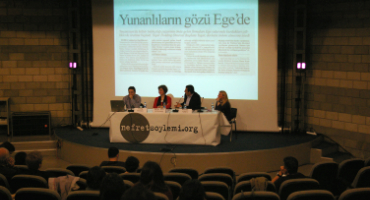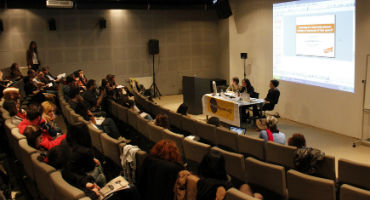Within the scope of Media Watch on Hate Speech Project implemented by the Hrant Dink Foundation, the media watch report covering the period January-April 2014 has been released in two sections. The first section, written by İdil Engindeniz, is based on the hate speech directed towards ethnic and religious identities along with content targeting LGBTI individuals and women. The second section, written by Derya Fırat and Barış Şannan, is constituted of an analysis of the discriminatory discourse around Armenian Genocide Remembrance Day, April 24.
The number of hate speech containing items continues to increase
In this period, the number of items consisting hate speech has been increased considerably, compared to the previous period, September-December 2013.
Every year, hate speech generated around the Christmas season is being observed. In December 2013 and January 2014, Christmas celebrations have been addressed by targeting Christians (and occasionally Jews), by the media institutions that frequently give reference to religious issues.
The April 24 and the Khojaly commemorations have been the topics through which specific groups have been targeted in the press. Other hot topics of debate were the conflict between the Gülen community (also known as the Hizmet Movement) and the Justice and Development Party government. In many print media organs who were critical towards the Gülen community, hate speech has been generated against Christians, Jews, and western communities.
The most frequently observed common feature of hate speech content was religious identity. Moreover, the groups that have been otherized and represented as enemies did not change. In the first four months of the year, most of the news items that produce hate speech was about Armenians. Jews and Christians followed Armenians, respectively. After these three groups, Greeks, Kurds and the British were among those groups that were most commonly subjected to hate speech.
Most of the news items consisting hate speech was in national press. However, there has been a significant increase of hate speech in local printed media. 28 out of the 34 items analysed under the title “Other Disadvantaged Groups” have been identified as containing hate speech against LGBTI individuals. Among these 34 items, hate speech towards women was detected 8 times.
Armenian Genocide Remembrance Day on Print Media
The subject of the second section is April 24, Armenian Genocide Remembrance Day. The content of the newspapers Aydınlık, Birgün, Habertürk, Hürriyet, Radikal, Sabah, Türkiye and Zaman between the 22th and 26th of April was searched and analysed, under the title of “Discriminatory Discourse in Print Media: The Armenian Genocide Remembrance Day – One Year Left to the 100th Commemoration”.
In order to develop a comparative understanding of how the Armenian Genocide Remembrance Day was covered by the press from 2007 onwards, an archival research was pursued as well. The first pages of the above listed newspapers were scrutinized. Hereby, it is confirmed that the number of items on the April 24 commemoration, which appeared between January and April 2014, has outnumbered the total number of items appeared in press between 2007 and 2013. It can be argued that, since PM Erdoğan expressed his condolences on the 99th commemoration of the Genocide, the April 24 commemoration was considered more newsworthy than it was in previous years by these newspapers.
Almost all of these newspapers published a collage of the news items on the April 24 commemoration appeared in other newspapers. This reflects how the actors of print media position themselves according to each other, and how they join actively to the molding of public opinion on the issue. Thus, the April 24 commemoration has been instrumentalized in order to reconstruct public perceptions on the Genocide as it is something “apolitical” or purely “a matter of condolences”.
This instrumentalization has been performed differently by different political actors. There were different approaches such as blaming the Genocide entirely on Kemalism and the Committee of Union and Progress, propagandizing the Justice and Development government through Erdoğan’s condolences to the Genocide, or representing Armenians as “traitors”.
The references given in the news items and articles on the April 24 commemoration hold a great deal of importance, to determine the different positions taken by different actors. In those terms, it was observed that the discursive sphere is constructed mainly by state officials and politicians. Among the 219 news items, 80 were comprised of demands such as “coming to terms with the past”, “justice”, “recognition of the Genocide”, “apology”, and “peace”. The only newspaper that completely denies the Genocide was Aydınlık.
Please click here to read the other reports.



